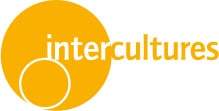Humor – the good, the bad, and the… complicated
Humor is a universal human activity and an important part of our social interactions and communication (Martin 2007). It is also related to various positive effects, like cohesion building and bounding (e.g. Vinton 1989; Terrion & Ashforth 2002), enhanced learning, improved psychological health, coping with problems and well-being (Svebak & Martin 1997, Martin et al. 2003) and many more. These and other positive effects of humor are important and not excluded from the work context.
Having said that, there are two main difficulties related to humor in the work environment, which prevent its positive effects to evolve: Firstly, too little or lack of humor (Haugen & Melhus 2011), obviously enough; and secondly, as humor is often referred to as a double-edged sword, one cannot discard the negative effects of humor, like aggressive or disparaging humor (e.g. Shiota et al. 2004; Rogerson-Revell 2006) or humor that simply failed (Williams & Emich 2014, Bell 2009).
The lack of humor, little or negative humor can be caused by rigid organizational structures and rules, individual attitudes, or interpersonal differences and problems in communication (Haugen & Melhus 2011). This can especially be true in areas, where humor can make an important positive impact – for example cross-cultural interactions. In such interactions, additionally to individual differences, various other culture-related factors can prevent the positive effects of humor (Bell & Attardo 2010).
Humor Profiler’s goals
In the light of these problems, the Humor Profiler has the following ambitions:
First, from the research curiosity and instrument’s validity point of view, the Humor Profiler was created to map peoples individual differences in experiencing and using humor at work with the focus on its various, interpersonal effects and associated pitfalls. The tool aims to map these individual differences in a way that is applicable in any given culture and thus permits to compare the results between different cultures.
Second, from the practitioner’s point of view, it is created for consultants and facilitators working with teams, with the goal to enhance the teams overall communication, climate and performance while addressing humor; and especially cross-cultural teams, where “humor often comes last, when it should come first”. Used in team environments, the Humor Profiler’s ambition is to be a support-tool, which helps to map and raise team-member’s awareness about the differences in humor preferences and practices within the team, and eventually support them to negotiate a common humor practice in the team.
Theoretical background
The Humor Profiler’s structural domain (phenomena that the tool purports to measure) is rooted in four areas of humor research and theory:

